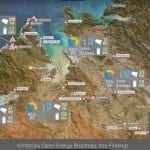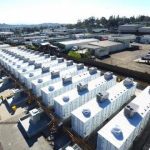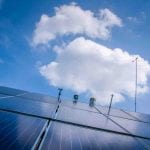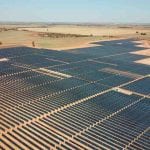Around The Web
Plan to shift Kimberley to renewables could save $15m a year
 Kimberley Clean Energy Roadmap reveals 60-90% mix of solar, battery storage and wind power can out-compete diesel or fracked gas on cost across the region.
Kimberley Clean Energy Roadmap reveals 60-90% mix of solar, battery storage and wind power can out-compete diesel or fracked gas on cost across the region.
The post Plan to shift Kimberley to renewables could save $15m a year appeared first on RenewEconomy.
JA Solar further promotes new energy development in Australia
 JA Solar has supplied all solar modules to South Australian Water Corporation ("SA Water") for its 4.14MW coastal photovoltaic project.
JA Solar has supplied all solar modules to South Australian Water Corporation ("SA Water") for its 4.14MW coastal photovoltaic project.
The post JA Solar further promotes new energy development in Australia appeared first on RenewEconomy.
Solar photovoltaics and wind energy: the climate change solution
 Solar PV and wind energy are growing fast enough to eliminate global coal, oil and gas consumption before 2050 - if politics allows.
Solar PV and wind energy are growing fast enough to eliminate global coal, oil and gas consumption before 2050 - if politics allows.
The post Solar photovoltaics and wind energy: the climate change solution appeared first on RenewEconomy.
Storage to become $1.7 trillion market, super-charged by networks and consumers
 BloombergNEF says networks and consumers set to drive global energy storage boom worth $A1.7 trillion, as cost of batteries tumbles by 52%.
BloombergNEF says networks and consumers set to drive global energy storage boom worth $A1.7 trillion, as cost of batteries tumbles by 52%.
The post Storage to become $1.7 trillion market, super-charged by networks and consumers appeared first on RenewEconomy.
TVA shifts from coal with 377 MW solar pipeline for Facebook
 Tennessee Valley Authority, not a great fan of non-hydro renewables, signs deal two big solar developments that will deliver 100% renewable energy to local Facebook data centres.
Tennessee Valley Authority, not a great fan of non-hydro renewables, signs deal two big solar developments that will deliver 100% renewable energy to local Facebook data centres.
The post TVA shifts from coal with 377 MW solar pipeline for Facebook appeared first on RenewEconomy.
Dubai expands mega solar project at “record” low price
 Dubia expends the scale of its mega solar park, and does so at a world-record low price for solar.
Dubia expends the scale of its mega solar park, and does so at a world-record low price for solar.
The post Dubai expands mega solar project at “record” low price appeared first on RenewEconomy.
Northern white rhino: New hopes for IVF rescue
Man uses surfboard to fight off shark at Ballina on NSW north coast
Surfer, 43, in hospital after attack at Shelly beach near Ballina on Wednesday morning
A man has used his surfboard to fend off a shark after being attacked in waters off Ballina on the New South Wales north coast.
The 43-year-old was bitten on his calf at Shelly beach about 7am on Wednesday and is being treated at Lismore hospital, NSW police said.
Continue reading...BayWa r.e.’s largest ever solar plant starts energy generation in Northern Victoria
 Once fully operational its 330,000 photovoltaic cells will generate enough power to supply 65,000 Australian homes.
Once fully operational its 330,000 photovoltaic cells will generate enough power to supply 65,000 Australian homes.
The post BayWa r.e.’s largest ever solar plant starts energy generation in Northern Victoria appeared first on RenewEconomy.
COMMENT: Paris goals can only be achieved in time with robust bottom-up action
Meet the latest carbon neutral certified organisation
The 2017-18 Supervising Scientist Annual Technical Report
BOOK – Designing Climate Solutions: A Policy Guide for Low-Carbon Energy
Burning Question: paper towels or hand dryers?
EU emitters exchange twice as many Kyoto offsets as a year ago
Invasive ant eradicated from Lord Howe Island
Oregon should throttle complementary policies when rolling out carbon market -study
Drugs in bugs: 69 pharmaceuticals found in invertebrates living in Melbourne's streams
EU Market: EUAs near €18 following strong auction as rally continues
BHP Billiton facing £5bn lawsuit from Brazilian victims of dam disaster
Action launched in Liverpool against Anglo-Australian mining company after 2015 tragedy that killed 19 people
The worst environmental disaster in Brazil’s history has triggered one of the biggest legal claims ever filed in a British court.
The Anglo-Australian mining company BHP Billiton is being sued for about £5bn by Brazilian victims of the Samarco dam collapse in Mariana three years ago.
Continue reading...


